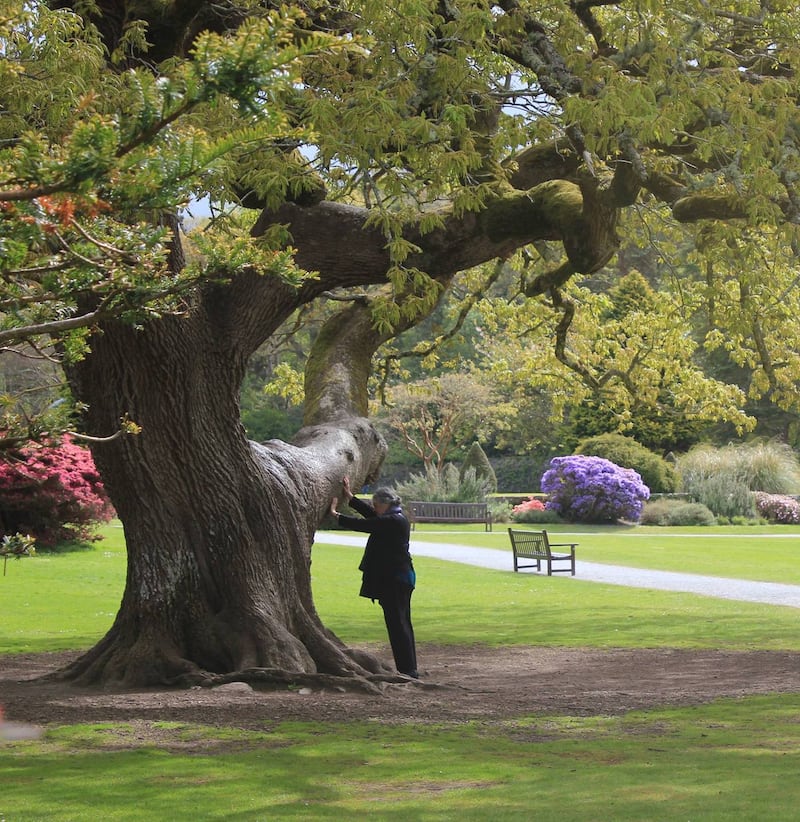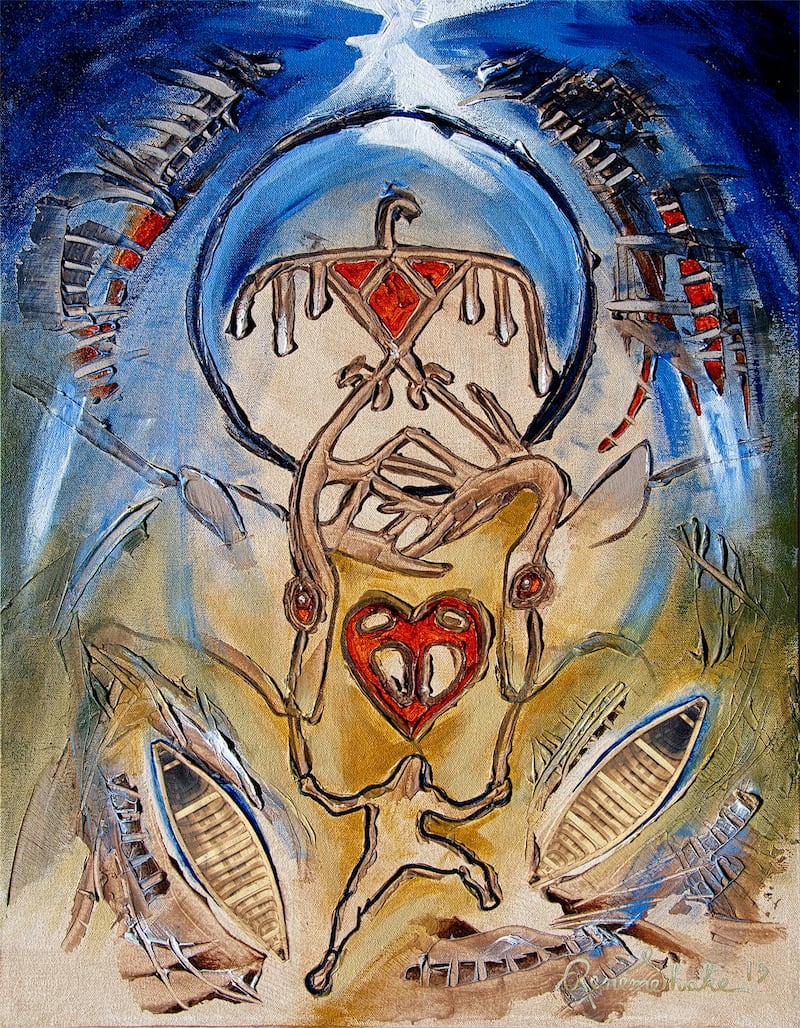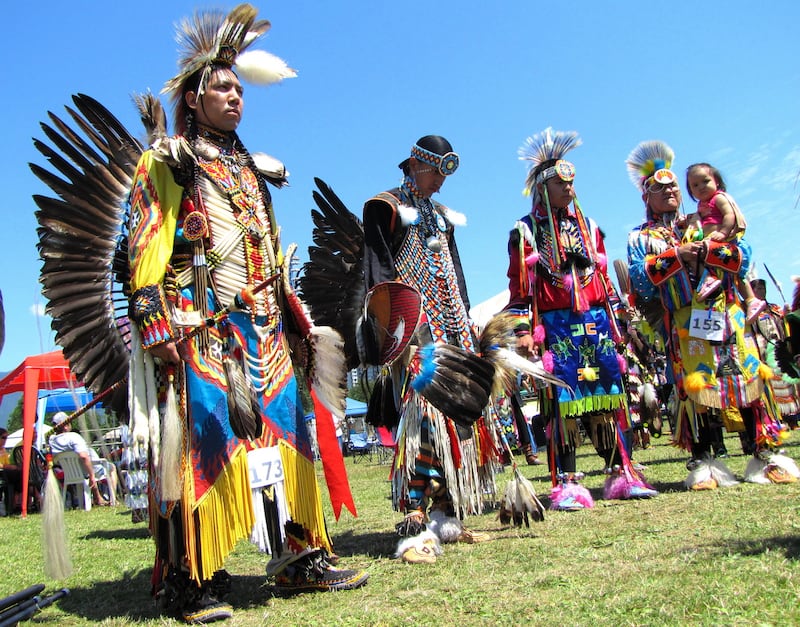Sometimes the story that you set out to tell is not the one that wants to be told. On a Friday morning in a house in Dublin, I sit down to speak with three indigenous storytellers from Canada. They are here for a conference called The Untold Stories of the Past 150 Years/Canada 150 at UCD, about Canadian history and identity.
I am wondering if we might talk about the art of storytelling, that particular gift that makes one person regale, another bore.
Instead, Maria Campbell, Rene Meshake, and Sylvia Maracle, from Canada's "Indian Country", accompanied by indigenous historian Kim Anderson, tell me a story of pain, resilience and the rebuilding of a shattered community through stories.
Sylvia Maracle is an activist and storyteller from the Tyendinaga Mohawks. She believes their stories will resonate with Irish people, “with colonisers having come and disrupted what was probably the natural order, and the belief in the broader sense of how strong the land is as a teacher”.

Maria Campbell is a Cree/Métis elder (the Cree are one of the largest groups of indigenous people in Canada, and the Métis are a distinct group, formed out of unions between indigenous and non-indigenous peoples in the fur trade era). She has short lines of tribal inking on each cheek, and speaks incredibly softly. She shies away from the title "storyteller", even though her book, Halfbreed, is taught in Canadian schools.
‘The clan has gathered’
Rene Meshake enters the room. He is an Anishinaabe elder (Anishinaabe being a group of culturally proximate indigenous peoples of Canada, otherwise known as Ojibwe) and a multidisciplinary artist. “The clan has gathered,” Maracle says, laughing.
After the residential school, "I never truly belonged to my community again"
Theirs are the lesser-told stories of Canada, of residential schools, forced relocation, and physical and cultural genocide. Languages and ceremonies were banned. Ceremonial objects were burned outside churches.
“The whole notion of Canadian culture is a very peculiar thing,” Maracle says, “driven by what are referred to unfortunately in English as founding nations – the English and French – which is just so not true since there was over 300 distinct First Nations there.”
She tells me of a conversation she had with an Irish taxi driver when she arrived. “He asked, ‘Are people recovering their memories?’ I said, ‘They were always there, we just didn’t have the conversation.’ He said, ‘That’s what happened here.’”
Rene Meshake’s story is one of pain wrought by the Indian residential school system where he was brought after the death of his grandmother, who raised him. The system was a network of boarding schools for indigenous people, administered by Christian churches and funded by the Canadian government. He was abused and told by the nuns there that his Ojibwe culture was “evil”.
After the residential school, “I never truly belonged to my community again”. He became an alcoholic, recovering only through a Mohawk medicine circle, through “identifying your hurt, expressing your hurt, and understanding, and change”.
A Truth and Reconciliation Commission was set up in Canada to provide redress to the indigenous people affected by residential schools. "It was the result of class-action lawsuits, to avoid them and to limit them . . . ," Maracle says.
Recently, however, Meshake was asked to speak in a church. “I took my creation story and first read it in my language. I told them to think of lakes and rivers, because our language is embedded in the land.”
The funky elder
Meshake describes himself as a “funky elder”, using Facebook to “post my art, and my Ojibwe word bundles”, where teachings are packed into a word, so when you take it apart, you find layers of stories.
By way of example, he references the word jiibayamig. "Jiibay means ghost, gamig is a lodge. In the old days, they would build this lodge when the elders knew they were going to die. They would prepare their children [by saying] 'I'm going away now, you cannot follow'. They went into this lodge to die and feed the animals that fed them all these years. Then a bear would come along maybe, have a few bites. When you saw a bear, you address the bear as Nimishoomis or Grandfather. And in that way, the respect was carried on."

Maracle believes in the power of storytelling as a force for rebuilding their communities. She feels privileged to have been “old woman raised” by her traditional grandmother.
“We didn’t have running water in our house; the kids were the running water: ‘Hey kids, go run get a pail of water.’ ” She recalls “sitting around a big table with no electricity and your lamps going, that kind of interaction was the entertainment, but it was also an incredible moral compass.”
Maracle tells me that people now visit Maria Campbell “because they want this good medicine, this traditional stuff”.
Campbell agrees that storytelling is medicine. “I grew up with a great grandmother and she never spoke English, she was a total ‘savage’ according to the priest because she never converted.”
But while Campbell grew up with stories, she always felt split between her traditional home life and her life outside. It was only after she stopped using drugs and attended her first ceremony in her late 20s that she realised the healing power of the stories, which came from “the old ladies, always women laughing”. It was a revelation to realise “that you’d got this medicine, everything you need to help put yourself back together”.
The Old Man
Campbell tells a story about the effects of colonisation that she learned from her teacher, the Old Man. “When I was a little girl, if I misbehaved my grandmother would take me to an anthill and she’d say, ‘I’ll come back to get you but you’re not to move, and you’re going to tell me what you saw’. That was like your ‘time out’, it helped you to calm down and focus, a way of disciplining.”
When she had her own children, there were no anthills in the city, so she used 5,000-piece puzzles instead. She’d keep it on the table, and when a child misbehaved, they were put working on it.
Her Old Man mentor was in her house one day and was intrigued by this "punishment". He had been trying to explain to her the effect of colonisation on their community's wahkotowin, which in English means kinship, "but if you look at the word bundle, it's all of our laws, it's the way that we talk to each other, the way that we laugh".
He threw the jigsaw in the air. "He said, 'That's what happened to us, everything was shattered and wahkotowin flew. Maybe you have three pieces, maybe she's got half of one, if we come back together and we start to rebuild that, you bring your three pieces, you bring yours, and soon we'll make the picture.'
“So there’s no such thing as one person has more knowledge than the other or more stories, because that becomes a power thing. Everybody is a part of rebuilding that story.
“The door just opened for me,” Campbell says. “All of a sudden these stories all came together and I realised the history stories were not separate from the family stories.” She says the idea of categorising is a western notion.
How stories heal
The Old Man told her how stories work. “I’m telling you the story so imagine that you’re the computer and I’m typing it in,” he told her. “When you need it, somebody will say something to you and they’ll hit the key and it will be there.” He did not believe in coincidence. “When it’s time, somebody will push that [key].”
I ask who the Old Man teacher was. “We just always called him Old Man,” Maracle says. “Even he would say, ‘Old Man tired now. You better take Old Man home.’ When you’re 115, you get to boss people around.”
Campbell has a mixed background with Scottish and Irish and Mohawk, and as a girl her mother would read to her about the Highland clearances and the Irish Famine. She was fascinated by other displaced cultures. The Old Man always encouraged her “to dig everywhere”, even reading biased accounts of Jesuit settlers, finding the parts that were true.
“When I started to really go out and search, I did it through politics and I was very radical,” says Campbell. “My thing was you go out and blow everybody up and send them back where they came from.”
There’s surprised laughter from the others.
She saw similarities to her own culture in Irish stories about little people, and the Travelling community
Campbell searched the world for inspiration. "That's how I discovered Ireland because in the 1960s and the 1970s, you had the IRA. What I found in Ireland were the writers. It was very similar to the kinds of things that this Old Man talked about. They were talking about things that I could feel, not things that were in my head, things that were true."
She saw similarities to her own culture, in stories about little people, and the Travelling community. Realising colonisers “practised on other people before they did it to us”, she no longer felt like a victim; she felt liberated.
The stories they tell evolve and draw on their own life experiences. “I can’t tell my grandmother’s story without telling my story.” Campbell says.
She describes other stories in their tradition, “people who would get up and chant a story and their story was like a song, and then people who only told the stories of a particular piece of land.”
Traditional copyright
Storytellers are no longer bound to oral tradition. Campbell is working on a virtual reality story of the land where she’s from, but there are still strict protocols.
Gesturing to Maracle she says, “I would never tell a story that belonged to her unless she gave me permission to do it, because the story is hers, or is tribal to her people. People will sometimes tell you a story and say ‘You can use that one’ but it’s like there’s a traditional copyright.”
Breaking it is, “a shameful thing to do”.
She recalls one story she wanted from her father that he would not give. “Then he got diagnosed with a terminal illness and I had to do the translating for him [in hospital]. I kind of went to pieces when we were driving home. He pulled to the side of the road, rolled me a cigarette, and he said, ‘That story you want, I’ll give it to you now.’ He retold it and she understood now that it was a story about death, not the funny story she’d always thought it was.
She translated and published the story. “In my family’s way, they were telling me that they trusted that I would treat it with integrity. There’s reciprocity if you mess [the story] around. We really believe that what you put out comes back to you. That’s an important part of our teaching.”

Then Campbell says to me, "You're a good visitor. We are talking to you because you're a good visitor, miyo keewikee kahn," she says in Cree.
"Biiwidewi", Meshake smiles, using the Ojibwe word.
Campbell finds it hard to speak to journalists. “Their energy doesn’t visit with you a lot of times.”
Meshake tells us the story of his artistic journey. He grew up with stories, too, sitting around a campfire with his grandmother. “I’d sneak off into the woods and draw pictures on clay paths. That’s how I learned to be an artist. Then the nuns said I’m not supposed to be drawing like this; I have to draw crosses, Christmas trees, candles. I drew so many crosses; I got a golden star for it.”
What I discovered was the more I wrote about my abuse at the Indian residential school, the less pain I feel
Later, discovering Dali and surrealism, led him back “to my own way of painting”.
Along with painting, and flute playing, Meshake writes. “What I discovered was the more I wrote about my abuse at the Indian residential school, the less pain I feel.”
Meshake’s story of his two lives reminds Campbell how the Old Man would sometimes ask her if, in a given moment, she was standing on “your Cree foot or your English foot?”
“If you’re standing on your Cree foot, the mother will always be in your language, but on your English foot, the mother will be gone because English comes from stealing from everybody else; it’s not a pure language of its own.”
English was necessary, however. “You can do something good with it if you learn to use it, but if you don’t, then it will always be your boss.”












